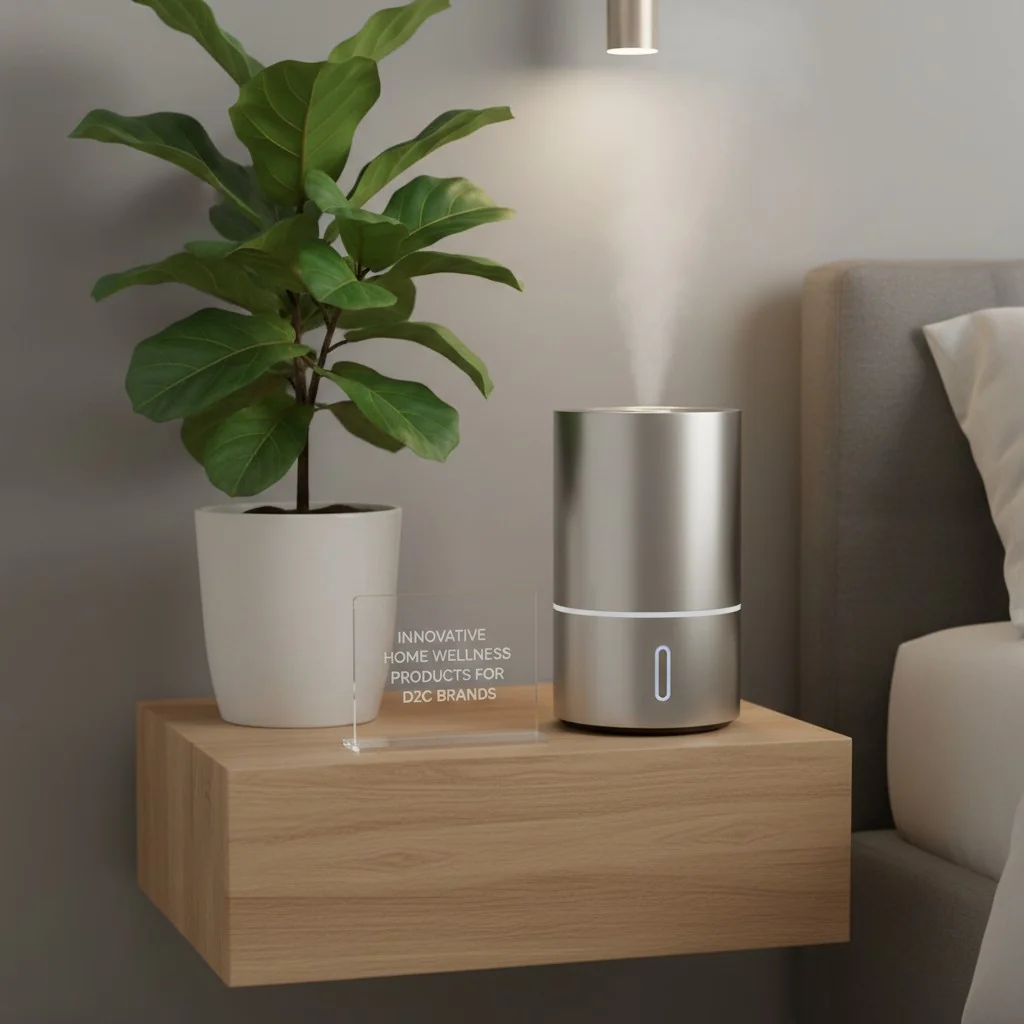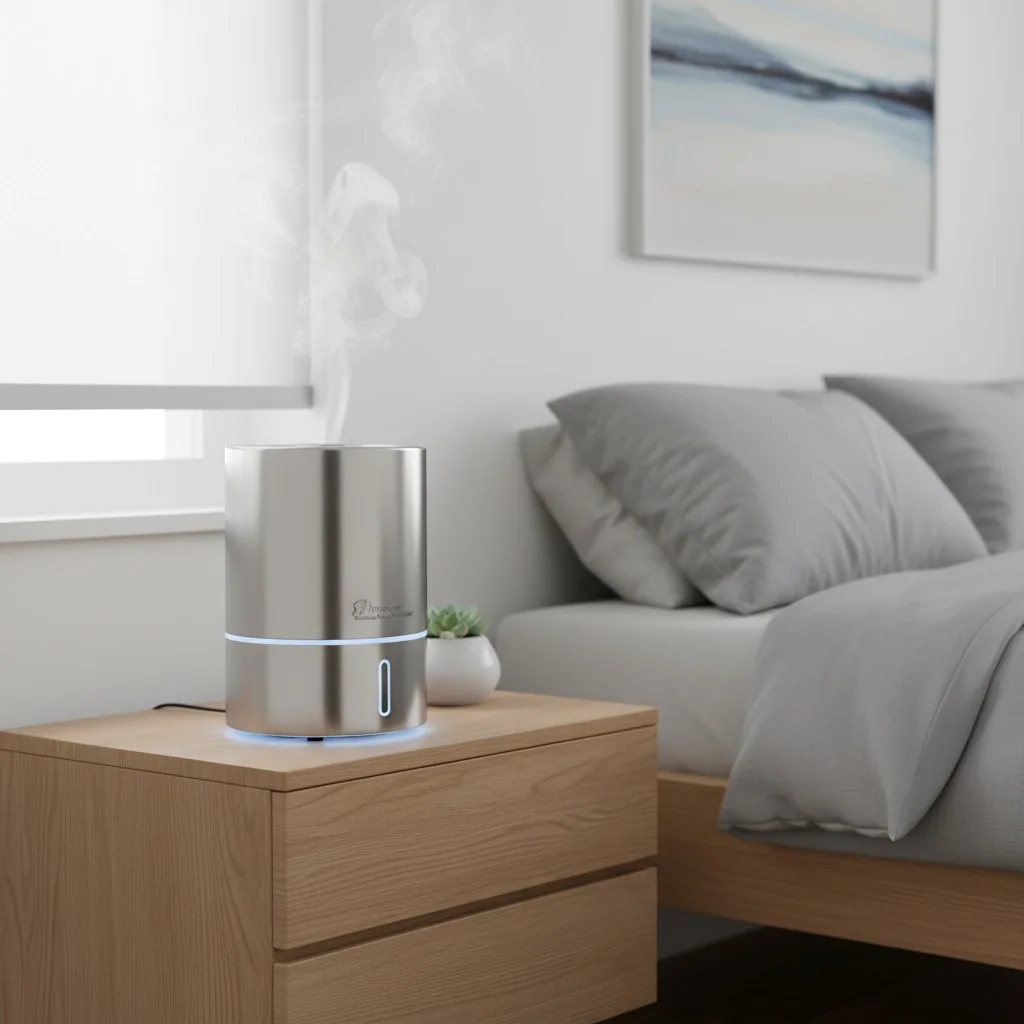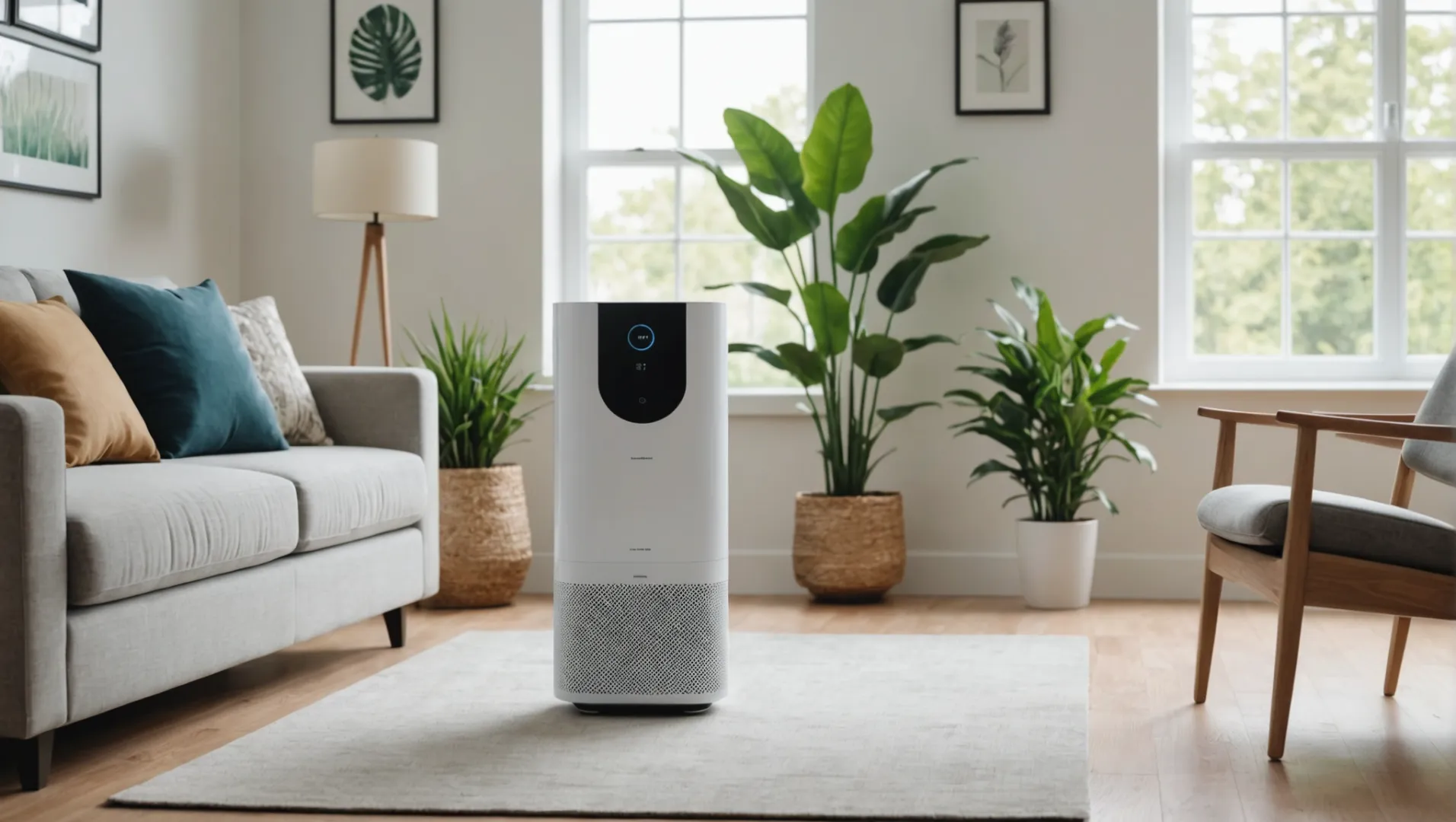
В мире, где наше здоровье как никогда ранее связано с качеством воздуха, понимание того, как обеспечить соответствие моего воздухоочистителя признанным стандартам, стало крайне важным.
Чтобы ваш воздухоочиститель соответствовал требованиям АХАМ стандарты, сосредоточиться на достижении соответствующего коэффициента подачи чистого воздуха (CADR) для размера вашей комнаты и придерживайтесь "правила 2/3". Это обеспечит эффективную фильтрацию загрязняющих веществ и оптимальное качество воздуха.
Взявшись за руки CADR Рейтинги и "правило 2/3" - это фантастическая отправная точка, но еще многое предстоит узнать о том, как обеспечить соответствие вашего воздухоочистителя следующим требованиям АХАМ и связанные с ними стандарты. Давайте вместе пройдемся по этому подробному руководству, где мы узнаем о сертификации, новых правилах и практических советах для принятия обоснованных решений.
Правило AHAM "2/3" обеспечивает оптимальную эффективность воздухоочистителей.Правда
Правило "2/3" позволяет подобрать мощность очистителя в соответствии с размером помещения, что обеспечивает эффективность.
Что такое АХАМ Правило "2/3" и как оно влияет на работу очистителя воздуха?
Сайт АХАМ Правило 2/3" - важнейший критерий эффективности воздухоочистителя, существенно влияющий на качество воздуха в помещении.
Сайт АХАМ Правило 2/3" гласит, что коэффициент подачи чистого воздуха (CADR) воздухоочистителя должно составлять не менее двух третей площади помещения в квадратных футах. Это правило обеспечивает эффективную очистку воздуха за счет соответствия мощности очистителя размеру помещения.
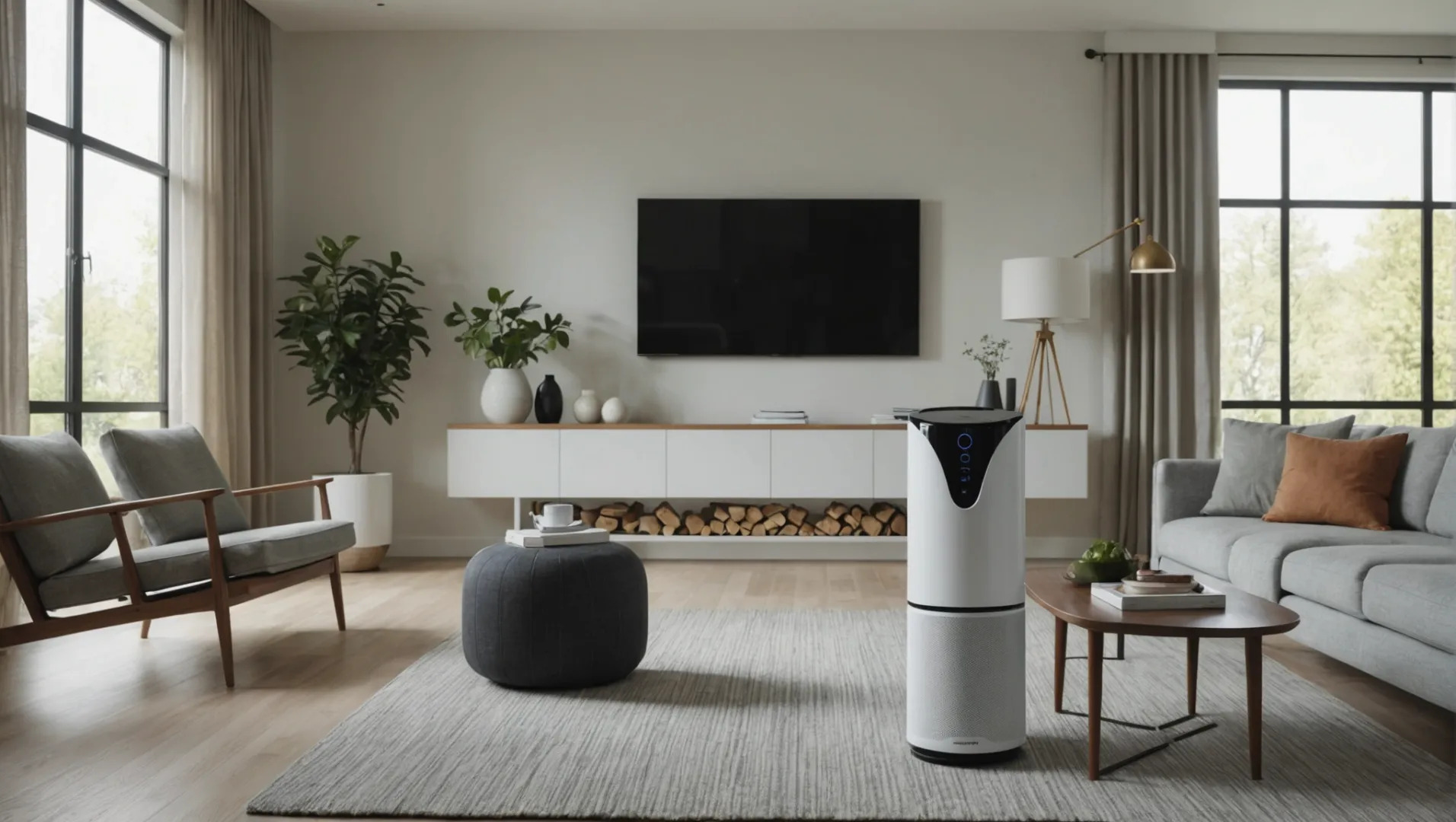
Понимание АХАМ Правило 2/3
Сайт Ассоциация производителей бытовой техники (АХАМ)1 установила "Правило 2/3" в качестве эталона для определения эффективности очистителя воздуха в конкретном помещении. По сути, правило CADR должен соответствовать как минимум двум третям площади вашей комнаты в квадратных футах. Например, если у вас комната площадью 150 квадратных футов, воздухоочиститель должен иметь CADR не менее 100. Этот показатель очень важен, так как он гарантирует, что воздухоочиститель сможет эффективно снижать содержание частиц в воздухе, поддерживая оптимальное качество воздуха в помещении.
Наука, стоящая за CADR и его влияние
Коэффициент подачи чистого воздуха (CADR) измеряет объем отфильтрованного воздуха, подаваемого воздухоочистителем. Он отражает способность очистителя удалять из воздуха в помещении конкретные загрязняющие вещества, такие как дым, пыльца и пыль. Придерживаясь "правила 2/3", производители могут гарантировать эффективность и надежность своих продуктов, обеспечивая потребителям уверенность в их способности очищать воздух.
CADR Рейтинги и их значение
CADR Приведены рейтинги для трех распространенных загрязнителей:
| Загрязнитель | Типичный CADR Необходим для эффективного удаления |
|---|---|
| Дым | Высокий CADR необходимо из-за малого размера частиц. |
| Пыльца | Умеренный CADR так как пыльца становится крупнее и менее плотной. |
| Пыль | Аналогично пыльце, но может потребоваться немного больше CADR. |
Понимая эти рейтинги и их значение, потребители могут выбрать воздухоочистители, которые наилучшим образом соответствуют их потребностям, гарантируя, что их жилые помещения остаются безопасными и здоровыми.
Почему соблюдение стандартов имеет значение
Соблюдение АХАМ Стандарты не только гарантируют качество и производительность, но и соответствуют развивающимся нормативным актам, таким как Energy Star и DOE сертификаты2. Эти сертификаты указывают на то, что воздухоочиститель является энергоэффективным и соответствует строгим государственным нормам, что обеспечивает потребителям дополнительное спокойствие.
По мере появления новых нормативных актов, таких как готовящийся DOE В связи с тем, что в 2024 году будет введено требование соответствия, понимание того, как поддерживать эти стандарты, становится еще более важным. Важно быть в курсе изменений в законодательстве, которые могут повлиять на дизайн продукции и соответствие требованиям.
В конечном итоге, понимание и применение АХАМ Правило 2/3" позволяет производителям и потребителям принимать обоснованные решения по очистке воздуха, способствуя улучшению качества воздуха и оздоровлению жилых помещений.
Согласно "правилу 2/3" AHAM, CADR должен составлять две трети от размера комнаты.Правда
Благодаря этому воздухоочиститель эффективно очищает воздух в помещении.
Правило 2/3" не имеет отношения к эффективности воздухоочистителей.Ложь
Это правило напрямую влияет на то, насколько хорошо воздухоочиститель очищает воздух.
Почему CADR Важно ли соответствие очистителя воздуха нормам?
Понимание CADR является залогом того, что ваш воздухоочиститель будет эффективно очищать воздух в помещении.
CADRили Clean Air Delivery Rate, измеряет эффективность воздухоочистителя в удалении загрязняющих веществ. Он имеет решающее значение для соответствия стандартам, установленным Ассоциацией производителей бытовой техники (Association of Home Appliance Manufacturers).АХАМ), обеспечивая эффективность устройств и их соответствие ожиданиям потребителей.
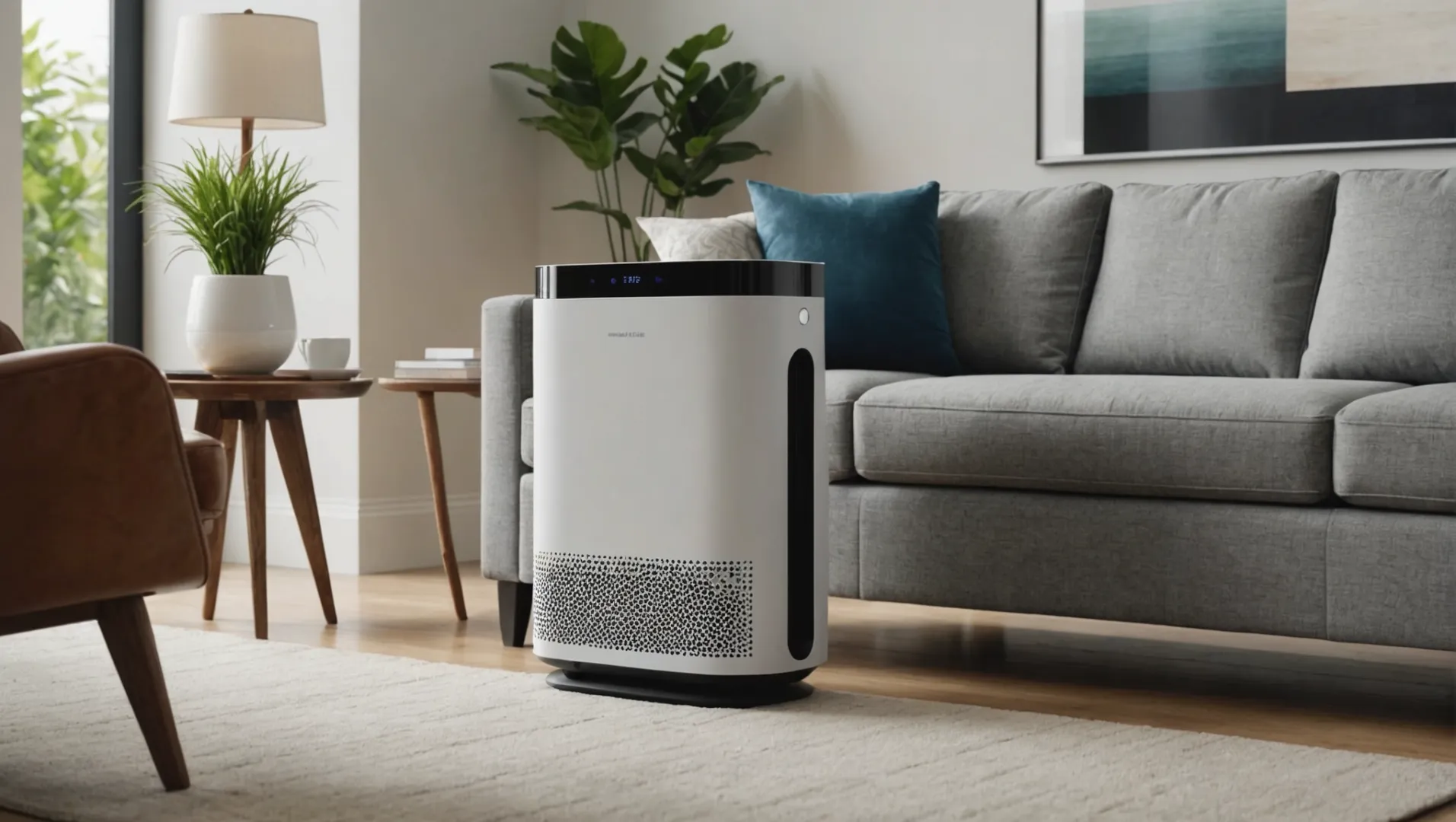
Роль CADR в разделе Качество воздуха
Коэффициент подачи чистого воздуха (CADR) - это важный параметр, который показывает, насколько быстро воздухоочиститель может удалять частицы из воздуха. Он выражается в кубических футах в минуту (CFM) и представляет собой объем отфильтрованного воздуха. Более высокий CADR Количество означает более быстрое удаление загрязняющих веществ, повышая качество воздуха3 значительно.
CADR необходим не только для оценки эффективности воздухоочистителя, но и для обеспечения его соответствия промышленным стандартам. На сайте АХАМ использует CADR для тестирования и проверки воздухоочистителей, предоставляя потребителям достоверную информацию.
Встреча АХАМ Стандарты
Для соблюдения АХАМ Согласно стандартам, производители должны гарантировать, что их продукция достигнет определенных CADR значение в зависимости от размера помещения. Правило "2/3" предполагает, что воздухоочиститель должен иметь CADR эквивалент не менее двух третей площади комнаты в квадратных футах. Например, в комнате площадью 150 квадратных футов CADR должен составлять не менее 100 CFM.
| Размер комнаты (кв. футов) | Минимум CADR (CFM) |
|---|---|
| 100 | 67 |
| 150 | 100 |
| 200 | 133 |
Это соответствие гарантирует, что очиститель может эффективно удалять загрязняющие вещества, такие как дым, пыльца и пыль, поддерживая здоровую атмосферу в помещении.
CADR и новые нормативные акты
За пределами АХАМ Новые нормы, такие как AHARE 241, направлены на поддержание не менее 6 смен воздуха в час (ACH). Это предстоящее соответствие может сделать CADR Еще большее значение это имеет для коммерческих помещений, где поддержание оптимального качества воздуха имеет решающее значение для здоровья и производительности.
Производители, ориентированные на Energy Star4 сертификаты также будут CADR актуальна, поскольку влияет на энергоэффективность очистителей. С 2024 года все воздухоочистители, поступающие на рынок США, должны соответствовать требованиям Министерства энергетики (DOE) стандартов, что еще больше подчеркивает важность CADR для обеспечения соответствия и конкурентоспособности на рынке.
Более высокий CADR означает более быстрое удаление загрязняющих веществ.Правда
CADR измеряет скорость, с которой воздухоочиститель очищает воздух; более высокие значения указывают на более быстрое удаление воздуха.
Согласно стандартам AHAM, CADR должен быть равен размеру комнаты в квадратных футах.Ложь
Согласно стандартам AHAM, CADR должен составлять две трети от площади помещения в квадратных футах.
Как работают Energy Star и DOE Как сертификаты влияют на ваш очиститель воздуха?
В современном мире, заботящемся об экологии, понимание сертификации воздухоочистителей является ключевым моментом для рационального выбора.
Energy Star и DOE сертификаты гарантируют, что воздухоочистители являются энергоэффективными и соответствуют стандартам США. Эти сертификаты не только снижают затраты на электроэнергию, но и гарантируют соответствие будущим нормам, делая ваш воздухоочиститель более разумным вложением средств.
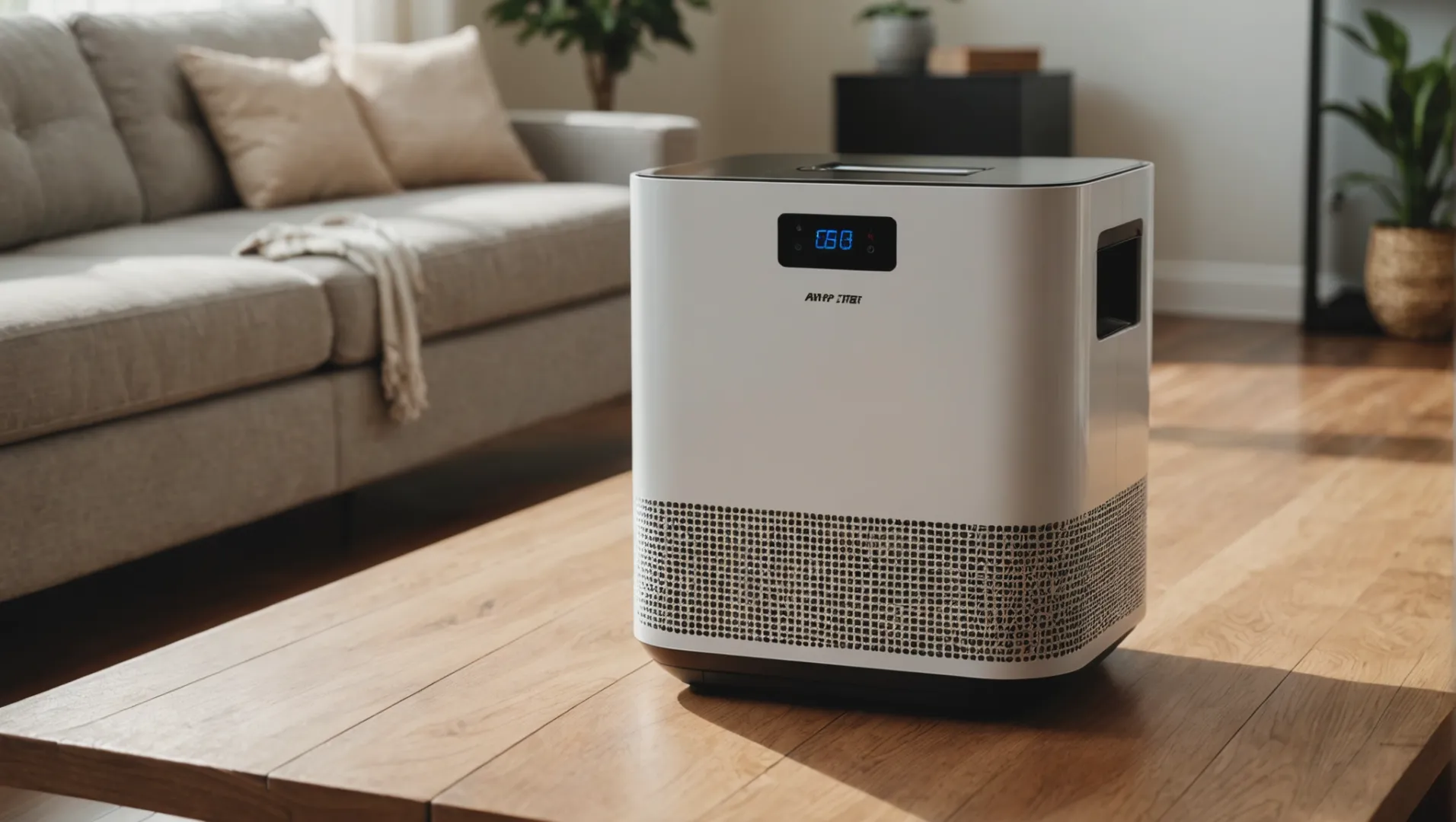
Понимание сертификации Energy Star
Energy Star - это надежный символ энергоэффективности. Он означает, что прибор, например воздухоочиститель, соответствует или превосходит определенные стандарты энергоэффективности. Для воздухоочистителя это означает, что он работает эффективно без ущерба для производительности. Такая сертификация может привести к значительной экономии на счетах за электроэнергию, особенно если прибор постоянно работает в помещениях, где качество воздуха оставляет желать лучшего.
Выбирая Очиститель воздуха с сертификатом Energy Star5Потребители получают гарантию снижения энергопотребления, что соответствует целям устойчивого развития и уменьшает углеродный след.
DOE Сертификация: Обязательное условие с 2024 года
Министерство энергетики (DOE) сертификация воздухоочистителей станет обязательной с 2024 года, установив эталон энергоэффективности для всей отрасли. Сертификация гарантирует, что все новые воздухоочистители, поступающие на рынок США, соответствуют минимальным стандартам эффективности, что поможет потребителям избежать продуктов, которые в противном случае потребляли бы больше энергии.
DOE-сертифицированные продукты тестируются в строгих условиях, что гарантирует их высокую производительность при минимальном потреблении энергии. Это становится крайне важным по мере того, как растет озабоченность состоянием окружающей среды, а потребители требуют более экологичных продуктов.
Влияние на потребительский выбор
Благодаря этим сертификатам потребители могут принимать взвешенные решения о покупке. Потенциальная экономия на коммунальных платежах за счет снижения энергопотребления может быть значительной. Более того, благодаря DOE сертификация станет обязательной, и о покупке несертифицированных моделей скоро не будет и речи.
Для производителей согласование с Energy Star и DOE стандарты6 не только повышает репутацию бренда, но и расширяет рыночные возможности благодаря соответствию нормативным требованиям.
Последствия для промышленности
Эти сертификаты также способствуют технологическому прогрессу в отрасли. Производители вынуждены внедрять инновации, уделяя особое внимание энергоэффективным конструкциям, которые не идут на компромисс с производительностью. В результате мы можем ожидать, что воздухоочистители станут более совершенными, предлагая расширенные функции и потребляя при этом меньше энергии.
В заключение следует отметить, что, хотя эти сертификаты изначально кажутся этикетками, их влияние очень велико: они формируют поведение потребителей, влияют на производственные процессы и в конечном итоге приносят пользу окружающей среде.
Сертификат Energy Star позволяет экономить на оплате счетов за электроэнергию.Правда
Продукты, сертифицированные Energy Star, разработаны с учетом требований энергоэффективности, что позволяет сократить расходы на электроэнергию.
Сертификация DOE станет необязательной для воздухоочистителей в 2024 году.Ложь
Сертификация DOE будет обязательной с 2024 года для всех воздухоочистителей в США.
Что такое соответствие стандарту AHARE 241 и почему это должно вас волновать?
Соответствие стандарту AHARE 241 представляет собой кардинальный сдвиг в стандартах очистки воздуха, влияющий как на производителей, так и на потребителей.
В соответствии с требованиями стандарта AHARE 241 воздухоочистители должны обеспечивать не менее шести смен воздуха в час (см.ACH) в комнатах и коммерческих помещениях. Этот стандарт имеет решающее значение для поддержания оптимального качества воздуха в помещениях и, как ожидается, станет значительным фактором на рынке воздухоочистителей, особенно в США, после 2024 года.
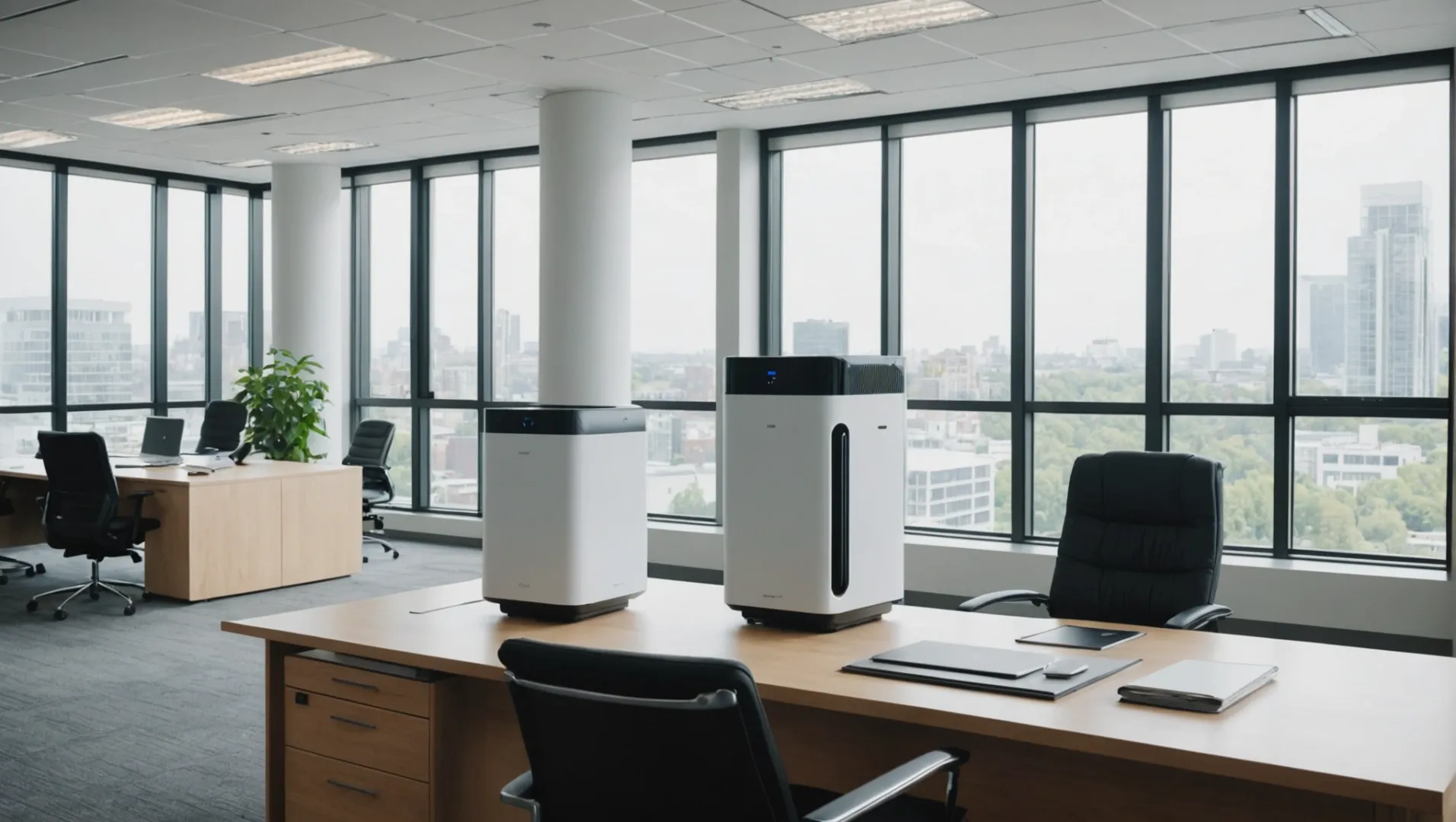
Понимание соответствия требованиям AHARE 241
Соответствие стандарту AHARE 241 - это новый стандарт, направленный на революцию в проектировании и использовании воздухоочистителей в различных средах. Основным требованием этого стандарта является достижение не менее шести смен воздуха в час (ACH) в любом помещении, включая жилые комнаты, коммерческие здания и системы отопления, вентиляции и кондиционирования воздуха. Этот показатель обеспечивает постоянное обновление воздуха в этих помещениях, что значительно снижает концентрацию загрязняющих веществ в воздухе.
Внедрение этого стандарта происходит в то время, когда внимание к качеству воздуха в помещениях достигло своего апогея. Пандемия COVID-19 подчеркнула важность чистого воздуха в помещениях, побудив регулирующие органы добиваться более строгих стандартов. В результате соответствие стандарту AHARE 241, вероятно, станет решающим фактором как для производителей, так и для потребителей.
Последствия для производителей и потребителей
Для производителей соответствие стандарту AHARE 241 означает инвестирование в исследования и разработки для создания более эффективных воздухоочистителей, способных соответствовать шести требованиям ACH требование. Это может быть связано с изменением дизайна существующих моделей или разработкой новых технологий, которые улучшают воздушный поток и возможности фильтрации.
Для потребителей, особенно в США, соответствие стандарту AHARE 241 скоро станет ключевым фактором при покупке воздухоочистителей. Поскольку новое законодательство ожидается после 2024 года, потребителям следует искать продукты, которые не только соответствуют этому стандарту, но и имеют такие сертификаты, как Energy Star и DOE для повышения энергоэффективности.
Будущее очистки воздуха
Переход на соответствие стандарту AHARE 241 свидетельствует о более широкой тенденции в отрасли очистки воздуха. По мере того как растет спрос на более чистую внутреннюю среду, увеличиваются и возможности для инноваций в технологиях очистки воздуха. Коммерческие воздухоочистители7 ожидается значительный рост, обусловленный новым законодательством и повышенным вниманием к поддержанию безопасной и здоровой среды в помещениях.
Таким образом, понимание и принятие стандарта AHARE 241 необходимо всем, кто работает на рынке очистки воздуха. Независимо от того, являетесь ли вы производителем, стремящимся не отставать от нормативных требований, или потребителем, желающим обеспечить оптимальное качество воздуха в помещении, это соответствие предлагает четкий путь к достижению этих целей.
AHARE 241 требует шести смен воздуха в час.Правда
Согласно стандарту, воздухоочистители должны достигать шести ACH в любом помещении.
После 2024 года AHARE 241 не затронет американских потребителей.Ложь
После 2024 года AHARE 241 будет иметь решающее значение для выбора воздухоочистителей в США.
Заключение
Навигация по сайту АХАМ Соответствие нормативным требованиям является ключевым фактором для обеспечения эффективной очистки воздуха. Понимая CADRБлагодаря сертификации и новым стандартам вы сможете улучшить качество воздуха, не отставая от нормативных требований. Инвестируйте с умом в свое здоровье и будущее очистки воздуха.
-
Узнайте, как это правило оптимизирует работу воздухоочистителя: Следуйте правилу 2/3 от AHAM: Вам всегда нужен прибор с CADR для табачного дыма не менее 2/3 площади вашей комнаты. Например, комната размером 10 x 12 футов - 120 квадратных футов ... ↩
-
Узнайте, как эти сертификаты повышают эффективность и соответствие..: Комнатные воздухоочистители, сертифицированные ENERGY STAR, примерно на 25% более энергоэффективны, чем стандартные модели, что позволяет потребителям экономить около 120 кВт/ч в год и $18 в год на ... ↩
-
Поймите, как CADR влияет на качество воздуха в помещении и эффективность очистителя..: Выбор воздухоочистителя с высоким рейтингом CADR гарантирует, что он будет эффективно очищать воздух от загрязняющих веществ, таких как пыль, пыльца, дым, ... ↩
-
Узнайте о преимуществах и требованиях Energy Star к очистителям воздуха: Комнатные воздухоочистители, сертифицированные ENERGY STAR, примерно на 25% более энергоэффективны, чем стандартные модели, что позволяет потребителям экономить около 120 кВт/ч в год и $18 в год на ... ↩
-
Узнайте, почему модели Energy Star экономичны и экологичны: Комнатные воздухоочистители с синей маркировкой ENERGY STAR на 27% более энергоэффективны, чем стандартные модели, и могут сэкономить более $130 ... ↩
-
Узнайте, как сертификация повышает рыночные возможности и репутацию бренда: Здания, сертифицированные ENERGY STAR, потребляют в среднем на 35 процентов меньше энергии, чем аналогичные здания по всей стране. Экономия средств может быть значительной. ↩
-
Узнайте о растущих возможностях в области очистки воздуха в коммерческих помещениях после 2024 г.: Улучшение качества воздуха в коммерческих помещениях - воздухоочистители могут удалять пыль, пыльцу, споры плесени, вирусы, бактерии, летучие органические соединения и запахи ... ↩


